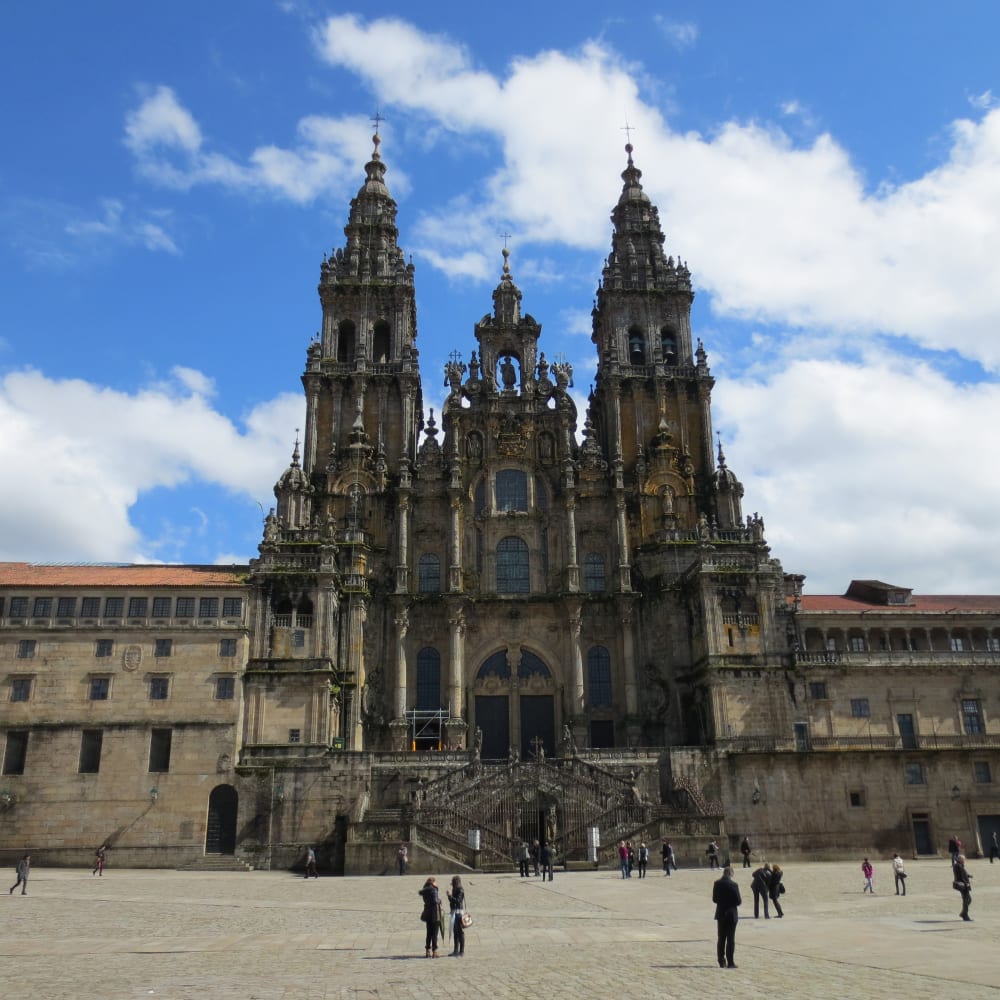Santiago, the Soul of Spain
Don Harris | July 2010




There is a magical city nestled close to the coastline of Galicia, which is often overlooked by visitors to Spain. It is Santiago de Compostela, far away from the usual Toledo - Sevilla - Córdoba - Granada - Barcelona tourist circuit, both in distance and temperament. It has both a holy and a cosmopolitan air. The focal point of the pilgrim city is the cathedral that harbors the tomb of St. James, or Santiago, the patron saint of Spain. 2010 is a Holy Year because the Feast of St. James, July 25, falls on a Sunday. He is credited with inspiring the embattled Christians to launch their 700-year Reconquista to restore their land from their Islamic conquerors, the Moors.

Especially in the days before July 25, the streets of the medieval city are swollen with hikers and pilgrims from all corners of the world. You will encounter young and old who have walked along the Camino de Santiago - a journey that takes several weeks or even months. Some of them have crossed the Pyrenees from Europe and walked west across the breadth of Spain with the holy city of Santiago as their goal. In medieval times, Santiago de Compostela ranked on a level with Jerusalem and Rome as a primary site for Christian pilgrims.
The Romanesque church is strong and evocative with masterful stone sculptures and long barrel vaulted aisles that seem to stretch as far as you can see. Following a tradition of more than a thousand years, pilgrims touch a pillar within the west entrance that has been worn smooth by the hands of so many faithful. One can easily be profoundly moved by this embodiment of twelfth century faith. Six hundred years later, the simplicity of the Romanesque was "updated" in exuberant Churrigueresque style in the sanctuary.
Above the high altar you can see an amazing gilded bust of Santiago - St. James, the brother of Jesus - that captures the extravagance of a later Spanish piety. Most feel drawn to approach the altar and stop to visit the crypt below. Then they ascend a few steps to approach the figure of the seated St. James from behind. Many of the devout wrap their arms around its shoulders while offering a silent prayer.
Several years ago my wife and I were there during the Holy Year celebration with our pilgrim son, Jonathan, who had just completed his two month journey from France. King Juan Carlos and Queen Sofia were in attendance as well as a flock of cardinals and other dignitaries. However, what Ruth and I found most meaningful was our experience of being part of the gathering of thousands of ordinary yet purposeful people at night in the Plaza de Obradoiro before the cathedral.
We saw a dramatic light show flash across the cathedral façade, as well as a brilliant display of fireworks. Although we were packed in very close to one another, there was no pushing and shoving, no feeling of threat or discomfort. The people were aware of one another, as we have always experienced in crowds throughout Spain - less a feeling of competition, more of accommodation.

The city fathers have artfully preserved the medieval section of Santiago with its granite streets framed by handsome stone arcades. Tucked within them you can discover bookstores and shops as well as restaurants and tapas bars galore - some with extravagant displays of the day’s catch from the sea, including shellfish such as mussels, vieras (scallops) as well as the local pulpo (octopus). You can order a plate of fresh pimientos de Padrón sizzling in olive oil, or a slice of Tarta de Santiago, a cake made of almonds, eggs, butter and sugar. It is a traditional confection that the locals make with great pride.
If for no other reason, one should visit Santiago to sample its wonderfully fresh seafood and fabulous crusty Galician bread in the company of many young and fascinating people from all walks of life. In addition to pilgrims, the city is filled with young medical students and musicians from the local university and medical school. Enjoying a meal outside in an ancient plaza as you listen to church bells, strolling singers, guitarists on the steps of the cathedral and local bagpipers is an incomparable experience.
As I am sure you sense, Santiago de Compostela has made a great impression on our family. It is the reason we chose the shell of Santiago to be the logo of La Tienda, and the shell and crossed pilgrim staffs to be the symbol of our private brand, Peregrino. I am sure some of my Spanish readers will agree with me that Santiago is the soul of Spain - with all of the country’s joy and fervor.
Saludos,
Don

